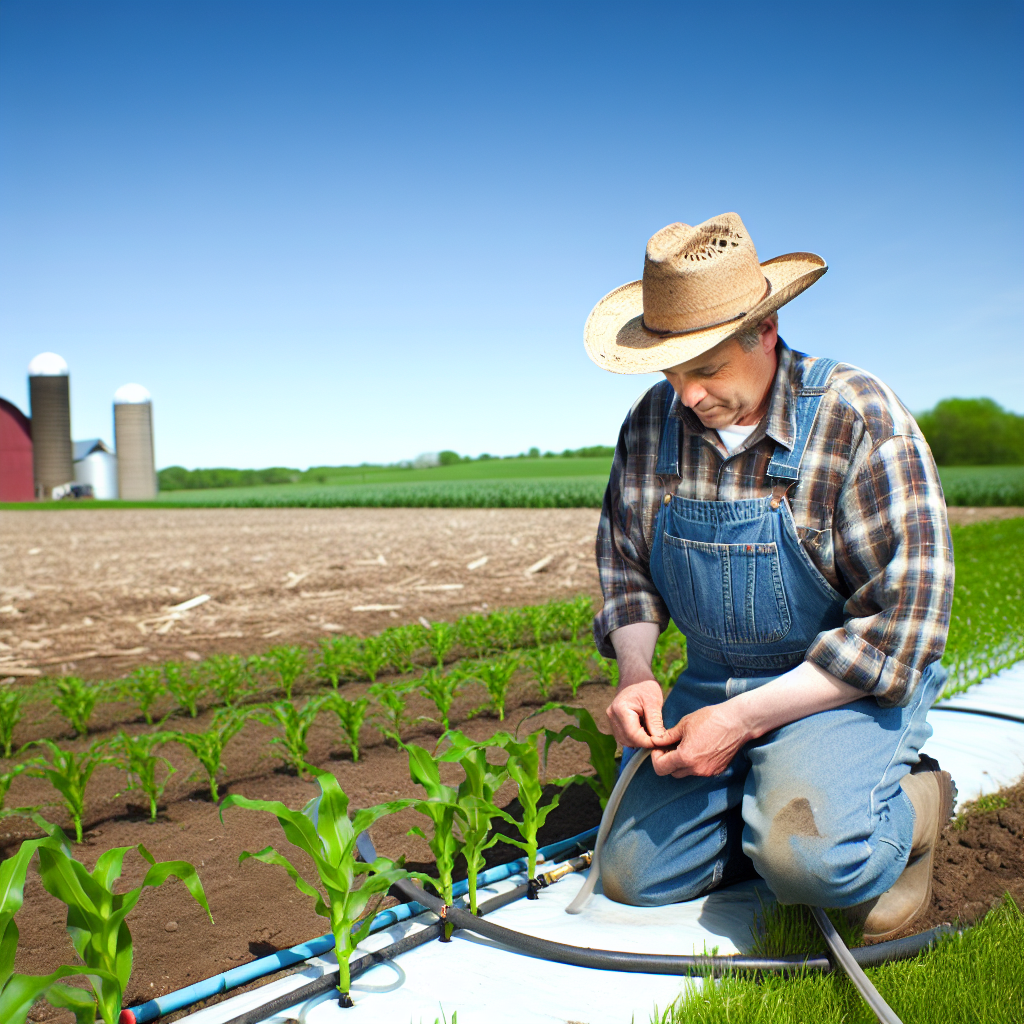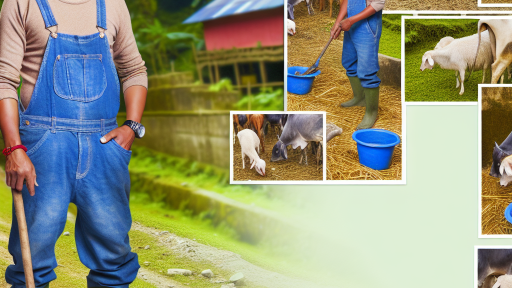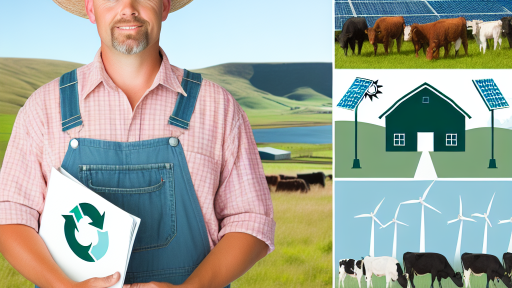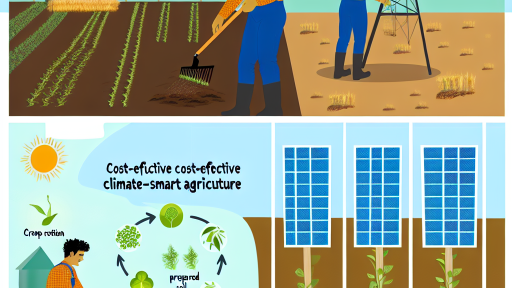Understanding the Fundamentals of Rainwater Harvesting
What is Rainwater Harvesting?
Rainwater harvesting is the collection and storage of rainwater.
This process allows for the use of water for various purposes.
Farmers utilize this method to manage water resources effectively.
Benefits of Rainwater Harvesting
This practice offers several environmental advantages.
Firstly, it reduces reliance on groundwater.
Secondly, it minimizes stormwater runoff.
This leads to improved water quality in local bodies.
Additionally, rainwater is often cleaner than well water.
Essential Components of a Rainwater Harvesting System
A typical system consists of several key components.
These include catchment areas, storage tanks, and filtration systems.
Catchment areas collect the rain as it falls.
Storage tanks hold the collected water for later use.
Filtration systems ensure the water is clean and safe.
Designing an Effective System
Proper design is crucial for an effective rainwater harvesting system.
Start by assessing your roof size and type.
Transform Your Agribusiness
Unlock your farm's potential with expert advice tailored to your needs. Get actionable steps that drive real results.
Get StartedThe material affects the quality of collected water.
Next, calculate the potential volume of rainwater.
This helps determine the size of your storage tanks.
Maintenance Practices
Regular maintenance keeps the system functioning well.
Inspect and clean gutters and downspouts frequently.
Ensure that storage tanks are sealed and clean.
Regularly check for leaks or damages in the system.
Legal Considerations
Before starting, research local regulations on rainwater harvesting.
Some areas may have specific guidelines or restrictions.
Compliance ensures the sustainability of your farming practices.
Implications for Sustainable Agriculture
Understanding rainwater harvesting is essential for improved farm water use.
It enables farmers to use resources efficiently.
Ultimately, this practice contributes to sustainable agriculture.
Choosing the Right Storage System for Rainwater
Understanding Different Storage Options
Farmers have various storage options for rainwater harvesting.
Each option has unique benefits and drawbacks.
Tanks, barrels, and ponds are common choices.
Consider the space available on your farm.
Also, think about the volume of rainwater you plan to collect.
Evaluating Tank Materials
Choosing the right material is essential for durability.
Plastic tanks are lightweight and resistant to rust.
However, they may degrade under UV exposure.
Metal tanks are robust but can corrode over time.
Concrete tanks provide longevity but may be more expensive.
Deciding on Size and Capacity
The size of your storage system impacts overall efficiency.
Showcase Your Farming Business
Publish your professional farming services profile on our blog for a one-time fee of $200 and reach a dedicated audience of farmers and agribusiness owners.
Publish Your ProfileCalculate your average rainfall and crop water needs.
This information helps determine the capacity required.
Remember to account for seasonal variations in rainfall.
Implementing Filtration Systems
Proper filtration is crucial for maintaining water quality.
Install a first-flush diverter to remove initial contaminants.
Use mesh screens to prevent debris from entering the tank.
Regularly check and clean filters to ensure optimal performance.
This practice complies with safe water usage standards.
Incorporating Maintenance Procedures
Regular maintenance extends the life of your system.
Inspect tanks for cracks and leaks each season.
Ensure gutters and downspouts remain clear of blockages.
Consider treating water with safe chemicals if necessary.
Always document maintenance activities for future reference.
Selecting Appropriate Catchment Areas for Maximum Efficiency
Assessing Land Topography
Begin by evaluating your land’s topography.
Identify areas with slopes directed towards the catchment system.
Look for natural depressions or low spots where water collects.
These features will aid in rainwater collection significantly.
Choosing Roof Types for Harvesting
The type of roofing material impacts water quality.
Opt for non-toxic materials, such as metal or tile roofs.
Avoid those treated with chemicals or harmful coatings.
Ensure gutters are clean and free of debris for optimal flow.
Planning Integration with Agricultural Practices
Integrate rainwater harvesting with existing farming practices.
You can enhance soil moisture levels through strategic use.
Consider using harvested water for irrigation systems.
Crops benefit significantly from consistent watering practices.
Implementing Proper Filtration Systems
Install filtration systems to maintain water quality.
Consider using mesh screens or sediment filters.
Regularly check and clean the filters for optimal performance.
This practice ensures clean water for agricultural use.
Monitoring Harvesting Efficiency
Regularly monitor the efficiency of your catchment system.
Keep track of rainfall amounts and water collected.
Use this data to adjust placement and structure if needed.
Improving your system over time will yield better results.
Gain More Insights: How to Adapt Crops for a Changing Climate
Integrating Rainwater Harvesting with Existing Irrigation Systems
Understanding the Basics
Rainwater harvesting collects and stores rainwater for agricultural use.
It complements existing irrigation systems effectively.
This method reduces dependency on groundwater and conventional sources.
Assessing Your Current System
Begin by assessing your current irrigation system.
Identify areas where rainwater can supplement existing sources.
Check the design to ensure compatibility with rainwater systems.
Showcase Your Farming Business
Publish your professional farming services profile on our blog for a one-time fee of $200 and reach a dedicated audience of farmers and agribusiness owners.
Publish Your ProfileChoosing the Right Components
Select appropriate components for integrating your systems.
Use gutters and downspouts to channel rainwater from roofs.
Consider installing a storage tank to hold collected rainwater.
Designing an Efficient System
Create a design that maximizes rainwater capture.
Ensure storage tanks are sized correctly for your needs.
Incorporate filtration systems to maintain water quality.
Implementing the Integration
Start the integration process by connecting your rainwater system.
Link storage tanks to your existing irrigation setup.
Use pumps to transfer water as needed during dry periods.
Monitoring and Maintenance
Regularly monitor both systems to ensure functionality.
Clean gutters and storage tanks to prevent clogging.
Check all connections for leaks and repair them promptly.
Training and Education
Provide training for staff on system operation and maintenance.
Share best practices for effective rainwater usage.
Encourage ongoing learning to adapt to changing conditions.
Evaluating System Performance
Periodically evaluate the performance of your integrated system.
Assess water savings and overall efficiency improvements.
Use this data to make informed decisions for future enhancements.
Gain More Insights: Boost Farm Sustainability with Carbon Sequestration
Maintenance Tips for Rainwater Harvesting Systems
Regular Inspection
Inspect your rainwater harvesting system regularly.
This helps to identify any potential problems early.
Look for leaks, cracks, or signs of wear in components.
Focus particularly on the roof catchment area.
Ensure the gutters and downspouts are clear and properly aligned.
Cleaning Filters and Gutters
Cleaning your filters and gutters is crucial for efficiency.
Remove debris such as leaves and twigs regularly.
Perform a thorough cleaning at least twice a year.
This prevents blockages and maintains water quality.
Checking Water Quality
Test the harvested rainwater for contaminants.
This is especially important if you use it for irrigation.
Consider using a water testing kit designed for rainwater.
Monitor bacteria levels and pH balance regularly.
Winterization Procedures
Prepare your system for colder months if applicable.
Drain all water from pipes and tanks to prevent freezing.
Insulate any exposed pipes to minimize risk of damage.
Cover the tanks to keep debris out during winter.
Repairing and Replacing Components
Promptly repair or replace worn parts of the system.
Such parts may include filters, pipes, or storage tanks.
Addressing issues early can save costs in the long run.
Always use high-quality materials for replacements.
Showcase Your Farming Business
Publish your professional farming services profile on our blog for a one-time fee of $200 and reach a dedicated audience of farmers and agribusiness owners.
Publish Your ProfileEducating Yourself and Others
Stay informed about best practices for rainwater harvesting.
Participate in workshops or webinars for up-to-date information.
Share knowledge with other farmers or community members.
This promotes better maintenance practices across the board.
Uncover the Details: Drought-Resistant Crops for Sustainable Farming

Analyzing Water Quality
Importance of Water Quality Testing
Testing water quality is crucial for effective rainwater harvesting.
It helps ensure that the water is safe for agricultural use.
Moreover, it identifies any harmful contaminants present in the water.
Common Contaminants in Rainwater
Rainwater can collect pollutants from roofs and storage systems.
Common contaminants include bacteria, viruses, and heavy metals.
Additionally, sediment and organic matter can affect water quality.
Methods for Testing Water Quality
You can test rainwater quality using simple kits available online.
Laboratories also offer professional testing services for accuracy.
Furthermore, testing should be done regularly to monitor changes.
Treatment Methods for Contaminated Rainwater
Using filtration systems is essential for treating rainwater.
Activated carbon filters effectively remove many contaminants.
Additionally, UV light treatment can eliminate harmful bacteria.
Chlorination is another option to disinfect stored rainwater.
Best Practices for Ensuring Quality
Collect rainwater from clean surfaces to minimize contamination.
Regularly clean collection systems and storage tanks.
Finally, keep an eye on local pollution sources that might affect quality.
You Might Also Like: Water Conservation Tips for Climate-Smart Farmers
Legal Aspects and Regulations Regarding Rainwater Harvesting
Understanding Local Laws
Local laws often dictate whether rainwater harvesting is allowed.
Each region may have specific regulations in place.
Farmers should check their local government policies first.
Understanding these laws helps avoid potential fines.
Permitting Requirements
Many areas require permits for rainwater harvesting systems.
These permits ensure compliance with safety regulations.
The application process may vary by location.
Farmers should be prepared to submit documentation.
This documentation typically includes diagrams and usage plans.
Water Rights Considerations
Water rights can significantly impact rainwater harvesting.
Farmers must be aware of their water rights status.
In some states, collected rainwater belongs to the property owner.
In others, regulations may restrict usage.
Understanding these rights protects farmers’ investments.
Health and Safety Regulations
Health regulations focus on ensuring collected water is safe.
This includes provisions for filtering and treating rainwater.
Regular maintenance is crucial to prevent contamination.
Compliance with these regulations is essential for public health.
Showcase Your Farming Business
Publish your professional farming services profile on our blog for a one-time fee of $200 and reach a dedicated audience of farmers and agribusiness owners.
Publish Your ProfileEnvironmental Impact Assessments
Some regions require environmental impact assessments.
This process evaluates potential ecological consequences.
Farmers may need to demonstrate sustainable practices.
Assessments ensure the protection of local ecosystems.
Cost-Benefit Analysis of Implementing Rainwater Harvesting on Farms
Introduction to Rainwater Harvesting
Rainwater harvesting involves collecting and storing rain for agricultural use.
This approach reduces reliance on traditional water sources.
Farmers can implement various collection methods to suit their specific needs.
Financial Considerations
Initial setup costs for rainwater harvesting systems can vary significantly.
Despite upfront expenses, many find the long-term savings substantial.
Farmers can reduce water bills and optimize resources through effective harvesting.
Incentives may also be available from government programs.
Operational Benefits
Utilizing harvested rainwater can improve overall farm productivity.
Consistent water supply leads to healthier crops and increased yields.
This method enhances resilience against droughts and water shortages.
Additionally, it may improve soil quality by reducing water runoff.
Environmental Impact
Implementing rainwater harvesting benefits the environment significantly.
It promotes water conservation and decreases stormwater runoff.
Farmers contribute to local ecosystems by utilizing more sustainable practices.
Over time, this can lead to healthier soil and increased biodiversity.
Potential Challenges
Despite the advantages, some challenges may occur during implementation.
Farmers must properly maintain their rainwater systems to ensure efficiency.
Additionally, local regulations may impact collection techniques.
It is crucial for farmers to assess their specific circumstances thoroughly.
Assessing the Cost-Benefit Ratio
A cost-benefit analysis can guide farmers in decision-making.
Assessing both immediate costs and long-term benefits is essential.
Ultimately, rainwater harvesting can enhance farm sustainability and profitability.
This method aligns with a broader trend toward responsible and efficient farming.
Additional Resources
11 Ways Farmers Are Adapting to Climate Change | Earth.Org
Water scarcity in agriculture: An overview of causes, impacts and …




